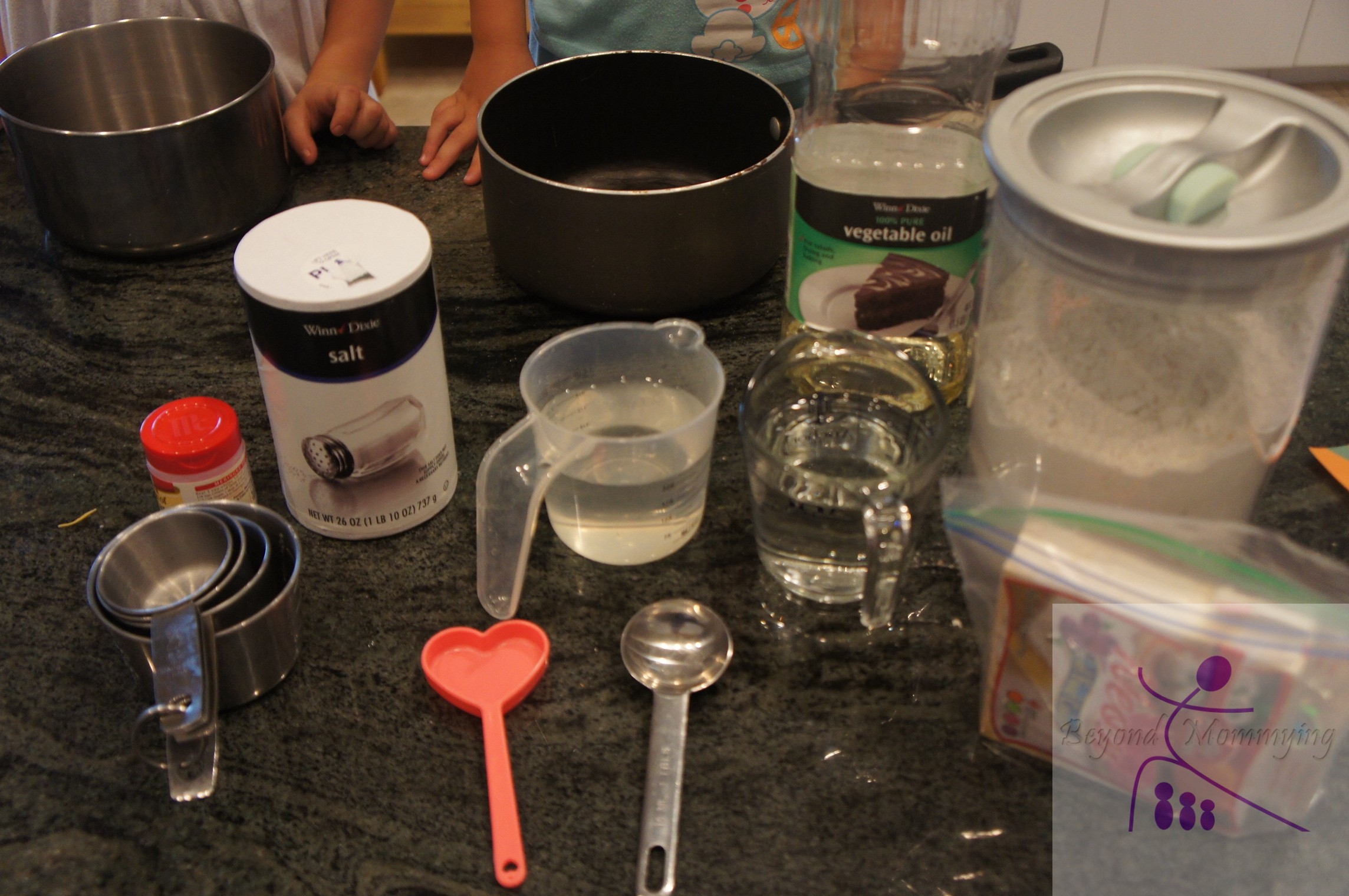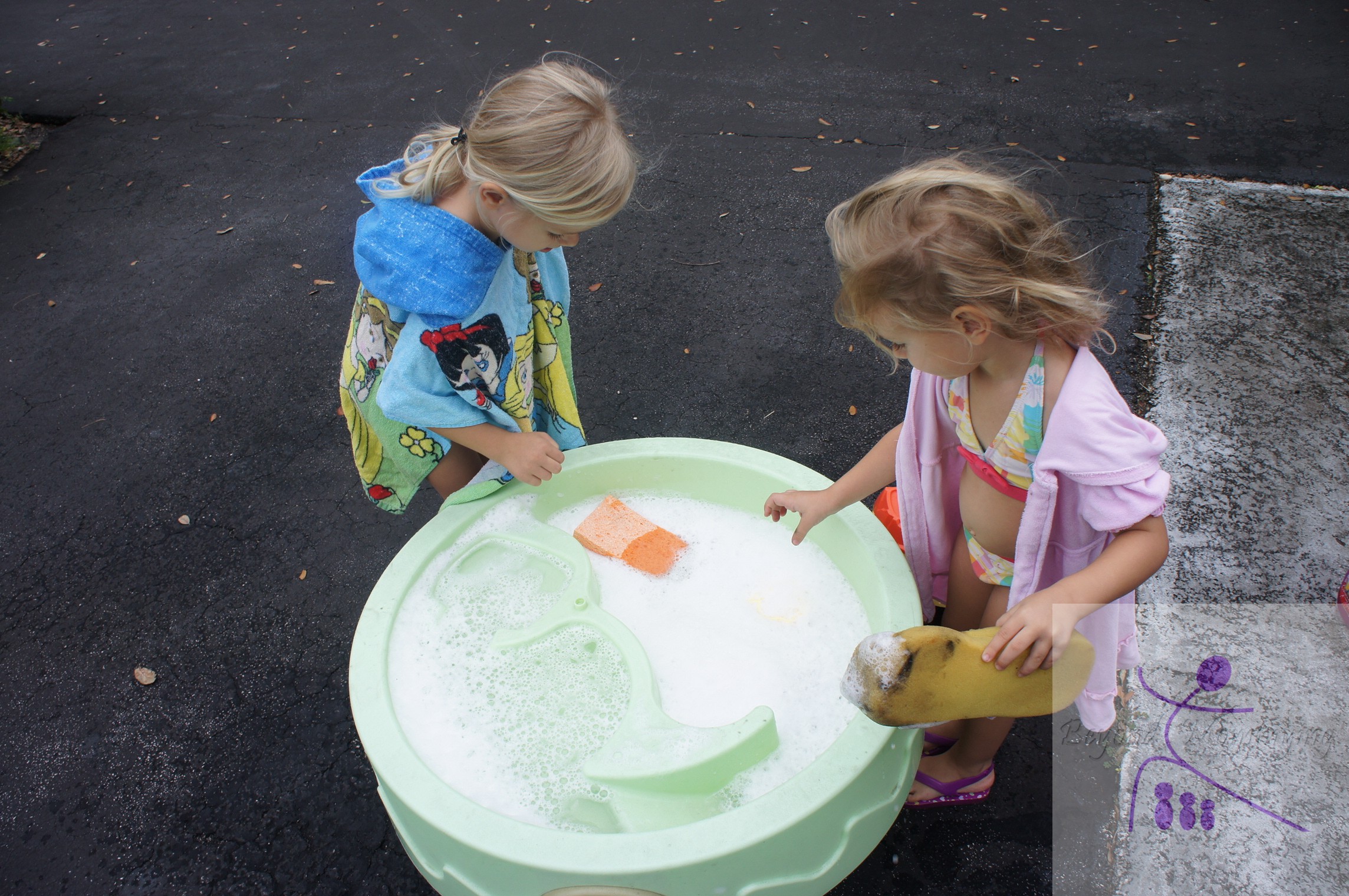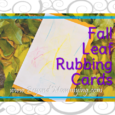Ah, the magic of play dough! Give a kid (or adult) a pile of play dough and watch the magic happen. Change up the tools to change up the play.
Play dough is great for so many reasons. It not only fosters creativity and exploration but it also aids in fine motor development and is a great sensory experience because it taps into many senses. Obviously there is the touch aspect as play dough is squishy and moldable but can be warm or cold; grainy or smooth; softer or harder; all depending on the kind and age. There are also the sight aspect bright colors which can be mixed to create marbling or tie-dye or melded to create brand new colors altogether. You can also add different spices, oils or extracts to change up the smell and add an additional sensory component.
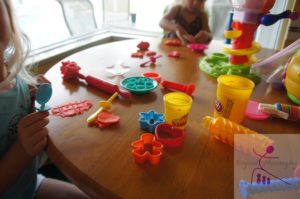 My kids (like most) are HUGE play dough fans. Last year all Honeybun wanted for her birthday was a Play-Doh machine (which she got) and the girls can spend forever sitting at the kitchen table creating things. I give them different tools to work with to extend their play:
My kids (like most) are HUGE play dough fans. Last year all Honeybun wanted for her birthday was a Play-Doh machine (which she got) and the girls can spend forever sitting at the kitchen table creating things. I give them different tools to work with to extend their play:
- Rolling pins
- Plastic knives and scissors
- Cookie cutters
- Toothpicks
- Extruders (those specificially made for Play-Doh or kitchen items like a cookie press, garlic press, pasta extruder, etc.)
- Anything that makes an impression (stamps, wooden letter blocks, shells, kitchen utensils, cars and trucks, etc.)
- Anything they can fill or make a mold of (mini cupcake tin, candy molds, mini tart pans, etc.)
- Anything that can be mixed in to change the texture or look (glitter, beads, nuts and bolts, pasta, dried beans, etc.)
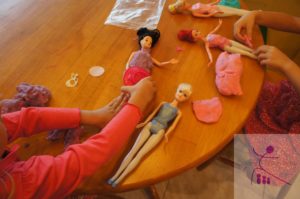 Play dough is also great for extending the play with other toys:
Play dough is also great for extending the play with other toys:
- Make clothes for Barbie and friends
- Make funny faces with Mr. Potato Head pieces
- Make a home for small plastic animals
- Make treats and have a tea party
 So when can little ones start experiencing the magic of play dough? From the time they can open their hands and hold things. Give a tiny little baby a small ball of play dough and see what happens. Watch them squish it in their hands (though tiny babies don’t know how to let go so be prepared to pry it out if they don’t like it!)
So when can little ones start experiencing the magic of play dough? From the time they can open their hands and hold things. Give a tiny little baby a small ball of play dough and see what happens. Watch them squish it in their hands (though tiny babies don’t know how to let go so be prepared to pry it out if they don’t like it!)
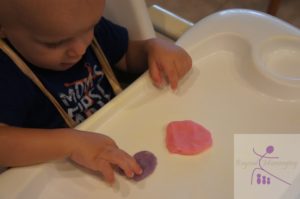 As a baby gets older, just let him/her explore. They might squish it, stretch it, rip it, throw it, taste it (most play dough is non-toxic but I prefer to make my own when using with little ones so I know what’s in it! Find the recipe I like here.)
As a baby gets older, just let him/her explore. They might squish it, stretch it, rip it, throw it, taste it (most play dough is non-toxic but I prefer to make my own when using with little ones so I know what’s in it! Find the recipe I like here.)
I would suggest adding tools between 18 months and 2 years when a child becomes interested in tools and how things work as well as adept enough to successfully try to use them.
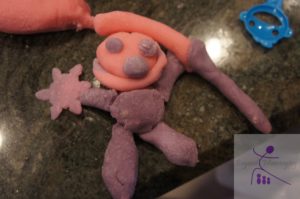 At first younger children will just make shapes and basic things but as they get older, they’ll start advancing their skills, creating new things and trying to mimic life. (This is Honeybun’s Elsa she made last week).
At first younger children will just make shapes and basic things but as they get older, they’ll start advancing their skills, creating new things and trying to mimic life. (This is Honeybun’s Elsa she made last week).

